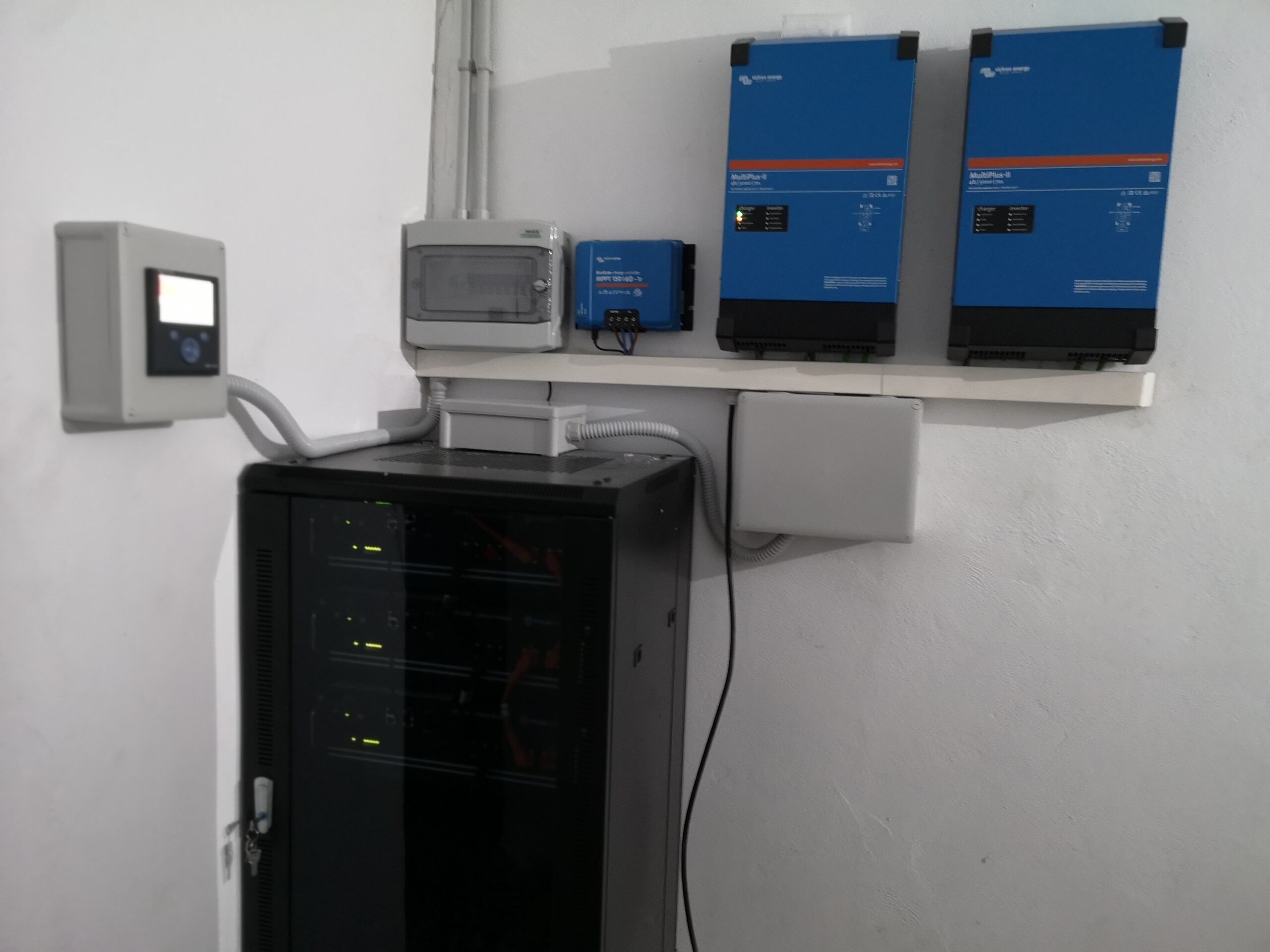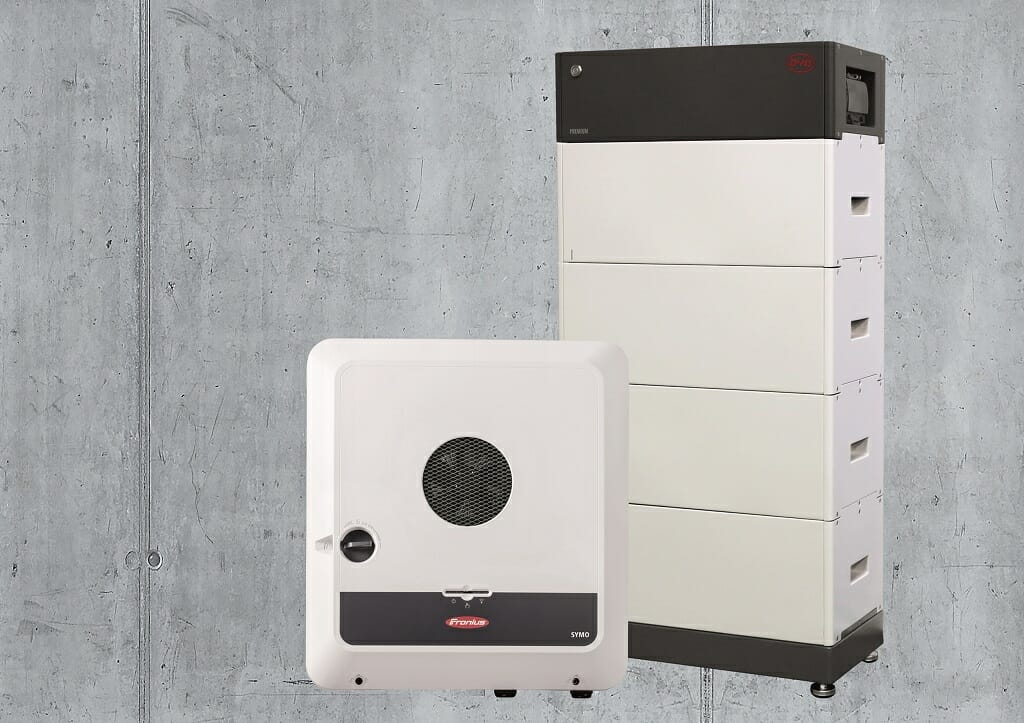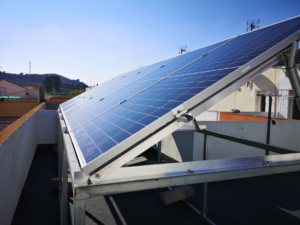Comparison of hybrid inverters; Victron - Fronius with lithium batteries
At the point where you have decided to install batteries in your solar panel installation, it is advisable to compare the solutions offered by Fronius and Victron before making a purchase decision.
Comparing three hybrid installations with the same storage capacity in lithium batteries and the same photovoltaic production capacity, we can contrast the different ADVANTAGES and DISADVANTAGES that we will have with each of these options (price, possibility of expansion, monitoring, extra functions, etc.).
Which option is more interesting?
In this comparison we will only take into account the price of the equipment in relation to its storage. I mention this because there are small variations in labour and wiring costs when installing one or other option, details that we are not going to take into account in this study.
So let's get on with it...
Cost comparison table
In the table below I select various combinations for my hybrid solar panel system. In all options, 15 solar panels of 330Wp are to be connected, but neither their cost nor their structure or labour has been taken into account... Only the inverter + battery set is compared as all other components will be the same for all options.
The aim is to have as much equivalence as possible in terms of storage, so the €/W ratio is taken from the cost of each option in relation to the energy it is capable of storing. In addition, if you click on each element, you will be taken to the section of our online shop so that you can find out more.
| Possible combinations | TOTAL cost of the package | Capacity (kW/h) | Ratio €/W (Storage) |
| Fronius PRIMO 5.0 + Multiplus II 48/5000 + 2 Batteries Pylontech 2.4kW/h | 6.123€ | 4.8 kW/h | 1275,62€ |
| Multiplus II 48/5000 + 2 Pylontech Batteries 2,4kW/h | 5.523€ | 4.8 kW/h | 1150,62€ |
| Fronius PRIMO GEN24 5.0 + ByD HVS Battery 5.1kW/h | 5.675€ | 5,1 kW/h | 1112,74€ |
"By combining solar inverter + lithium battery, we are able to store the surplus energy without exchanging it with the grid and use it as we wish.
Fronius + Victron + Pylontech

Combination consisting of the following components:
- Fronius Primo 5.0-1 Solar Inverter
- Fronius Meter 100A single phase
- Inverter charger Victron Multiplus II 48/5000
- Victron Meter (Carlo Gavazzi ET112)
- Victron monitoring (VenusGX).
- 2 Lithium batteries Pylontech US2000C 2,4kW/h.
- 19″ rack 22U high + trays.
| PROS | AGAINST |
| Maximum daytime power up to 10kW (5kW from Fronius Primo + 5kW from Victron Multiplus) | Higher initial investment, higher cost per power. |
| Maximum nighttime power up to 5kW (5kW from Victron Multiplus) | 2 Meters to be installed (Fronius + Victron) |
| More efficient if we consume most of the energy during the day. | |
| It allows us to hybridise an existing installation by adding batteries at any time. | |
| We can even disconnect from the electricity grid and be independent. | |
| Battery upgrades possible (2.4 kW/h modules in parallel) |
PERSONAL OPINION: We have a total daytime power of up to 10kW (5kW from Fronius Primo + 5kW from Victron Multiplus).
Victron + Pylontech

With the following combination of devices, we achieve self-consumption connected to the grid by means of the Victron ESS system, as if it were an on-grid inverter.
- Charge controller Victron Bluesolar 250/100
- Inverter charger for stand-alone Victron Multiplus II 48 5000
- Victron Meter (Carlo Gavazzi ET112)
- Victron Monitoring (VenusGX)
- 2 Lithium batteries Pylontech US2000C 2,4kW/h.
- 19″ 22U high rack + trays
| PROS | AGAINST |
| Maximum 24h. power up to 5kW (5kW for the Victron Multiplus) | Higher initial investment, higher cost per power. |
| More efficient if we consume most of the energy at night. | |
| We can become off-grid and independent. | |
| Battery upgrades possible (2.4 kW/h modules in parallel) |
PERSONAL OPINION: It allows us to put as many inverters in parallel as we need or create a three-phase network, the batteries can also be extended as much as we want and we have no limitation to add more panels (we can have 3-4-... charge regulators for each group of panels with their own orientation). If we run out of electricity in the grid, we have a specific output that gives us all the power for unlimited time as long as we have charge in the batteries.
Fronius + ByD (Other battery brands coming soon)

New Fronius hybrid inverter range, new features.
- Fronius Primo 5.0 hybrid inverter GEN24 single phase
- Fronius single-phase meter
- ByD HVM high voltage lithium-ion battery
| PROS | AGAINST |
| Maximum daytime power up to 5kW (5kW for Fronius Primo GEN24) | Investor cost |
| No batteries are required to install the system, they can be installed at a later date. | Limitations on battery expansion (Temporary) |
| Even without a battery, it has a 3kW output that provides us with energy directly from the sun for specific situations. |
PERSONAL OPINION: A great option to consider and my recommendation for all self-consumption installations that plan to install batteries in the short-medium term.
To conclude this analysis, I can only ask you to share this page on social networks and that contact us if you have any doubts.





